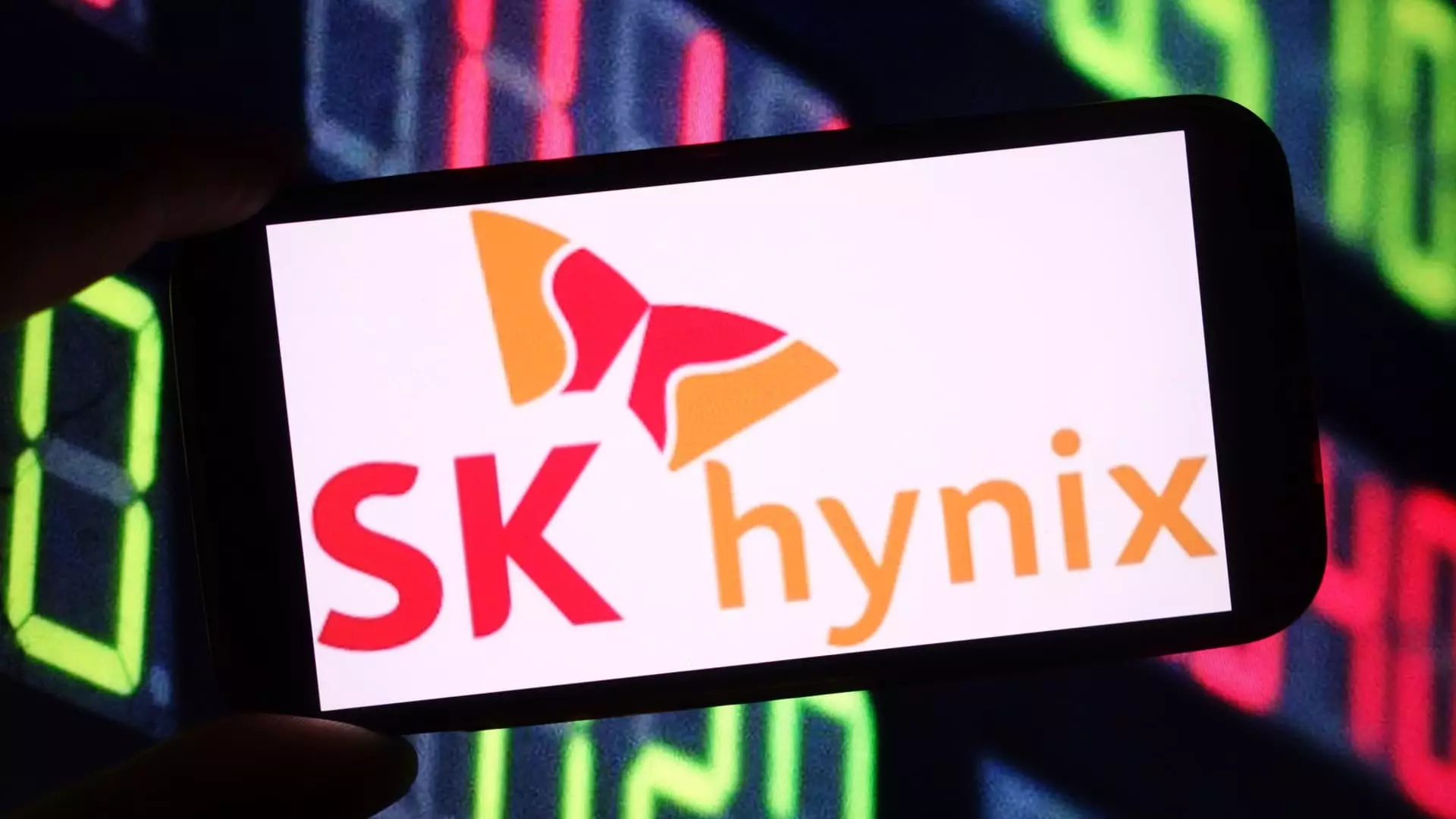In a remarkable showcase of resilience and market foresight, South Korea’s SK Hynix announced its first-quarter financial results, significantly exceeding projections set forth by analysts. The semiconductor powerhouse reported revenues of 17.64 trillion won (approximately $12.36 billion), overshadowing expectations of 17.26 trillion won. Operating profits also impressed, registering at 7.44 trillion won against an estimated 6.62 trillion won. This impressive performance—a staggering 42% revenue increase year-over-year and a phenomenal 158% surge in operating profit—highlights the company’s stronghold in the memory chip sector amid uncertain global economic conditions.
However, a closer examination reveals a more nuanced picture. On a quarterly basis, SK Hynix experienced an 11% dip in revenue and an 8% decrease in operating profit from the previous quarter’s record highs. This inherent volatility, tempered by a robust year-over-year performance, encourages a deeper understanding of the fluctuating semiconductor market. As a leader in dynamic random access memory (DRAM), SK Hynix is entwined with various macroeconomic factors, including the unpredictable landscape of U.S. trade policies, aimed primarily at the semiconductor sector.
AI’s Transformative Role in Memory Demand
The driving force behind SK Hynix’s latest financial windfall is not simply the company’s product line but the exponential demand for high-bandwidth memory (HBM) chips in artificial intelligence (AI) applications. An SK Hynix executive underlined the AI sector’s critical impact, stating, “While reciprocal tariff measures between some countries are currently suspended, there are growing concerns that tariff can be applied to semiconductor products.” This acknowledgment of macroeconomic complexity is crucial for understanding the stakes involved in the memory chip market.
Despite these uncertainties, the outlook for AI continues to radiate optimism. As tech giants ramp up investment in AI capabilities, new product launches in consumer electronics featuring AI functionalities are anticipated to spur demand for DRAM. The company’s strategic positioning as a key supplier of HBM, particularly to prominent players like Nvidia, indicates that SK Hynix is not merely weathering the storm—it’s actively capitalizing on the burgeoning AI ecosystem.
A Broadening Horizon: The Future of AI Memory Solutions
The accelerating pace of AI development has catalyzed notable investments in the memory chip sector. SK Hynix recognizes that open-source AI models and sovereign AI projects will further amplify memory demands. The company cited DeepSeek’s groundbreaking R1 reasoning model as a testament to success in resource-limited environments, forecasting that such innovations will propel both AI and memory markets forward.
As the memory market evolves, pivotal players like Micron Technology and Samsung Electronics remain formidable competitors. Nevertheless, SK Hynix has solidified its dominance, reportedly capturing 70% of the HBM market by revenue share in the first quarter, as noted in a recent Counterpoint Research analysis. This competitive edge highlights the urgent need for continuous innovation and adaptability.
As demand for AI capabilities surges, SK Hynix’s role in shaping the landscape becomes increasingly evident. The company is not just responding to consumer needs; it is positioning itself as a cornerstone of future technological advancements. The ongoing evolution of AI and its integration with memory solutions foreshadows an unprecedented transformation in computing power and analytics.
The Broader Economic Context and Its Implications
In an era marked by emerging technologies and shifting economic realities, SK Hynix serves as a bellwether for the semiconductor industry at large. The caution expressed regarding future tariffs reflects an acute awareness of the geopolitical dynamics affecting the tech sector. The global semiconductor market remains tightly interwoven with the neurotic fluctuations of international trade policies, particularly concerning the United States.
It is essential to recognize the volatile environment within which SK Hynix operates and its implications for broader industry trends. While short-term fluctuations inevitably affect quarterly results, the company’s strategic maneuvers could redefine the marketplace. As consumer electronics continue to evolve with AI integration, the symbiotic relationship between technology and memory solutions will undoubtedly deepen, reshaping how we engage with digital capabilities in our daily lives.
In this light, SK Hynix’s strong quarterly performance offers not just a snapshot of its operational success but also a window into the fascinating dynamics at play within a rapidly changing technological landscape.


Leave a Reply